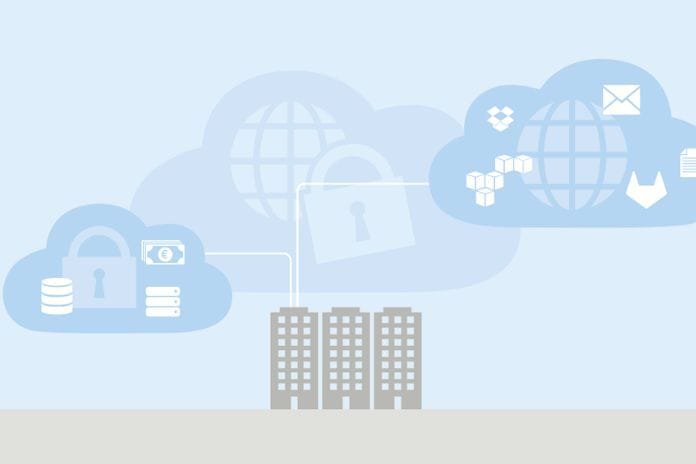Safely On The Move In The Hybrid Cloud

This solution offers companies more flexibility, agility, lower costs and high scalability. This helps them innovate, grow and gain a competitive advantage. For example, sensitive workloads could be deployed on-premises or in a private cloud, while fewer mission-critical resources operate in public Clouds. But despite the many advantages, the hybrid environment also poses challenges for IT security. Therefore, operations in the hybrid cloud environment must be simplified and policies strengthened.
Little Insight As A Risk
To protect the entire hybrid infrastructure, applications, workloads and data, security forces need to know what those assets are and where they are located. They must also see the entire hybrid inventory, not just the individual elements. However, transparency is a major challenge for hybrid cloud security.
These environments are very complex and full of data streams with multiple connectivities, which can lead to security vulnerabilities if disrupted. Another problem with hybrid cloud security is the inability to implement a fragmented security approach to control the entire network.
Because of the thousands of integrated and interdependent applications and data, vulnerabilities arise that increase the risk of cyber attacks. For comprehensive hybrid cloud security, every company, therefore, needs a concept that can be used to control the entire network.
Clarify Responsibilities
DevSecOps teams manage cloud security in many companies because they can see what’s happening inside the cloud. However, in the hybrid cloud, many applications talk to servers or clients outside the cloud, which DevSecOps teams may need help to see. The protection of data flowing in and out of the cloud is sometimes their responsibility. Closing these gaps requires other departments to manage security operations and mitigate hybrid cloud threats.
IaC—Between Automation And Control
Infrastructure as Code ( IaC ) is often used to deploy security controls in the hybrid cloud automatically. This helps prevent misconfigurations, regulatory violations, and difficulties in the production phase or before application testing. With IaC-based security, security best practices can also be defined in template files, mitigating risks.
But it would help if you put only some things on automation and IaC. Otherwise, since all controls are operational, there could be serious problems in the hybrid cloud. Without the attentive eyes of a few employees and further security measures, weak points can remain undiscovered, leaving the door open to attacks.
However, since security professionals who are not active on the operational side often have to monitor the cloud environment, misunderstandings and careless mistakes can easily occur – a very costly proposition for companies.
For this reason, automatic updates should be deployed regularly without requiring time-consuming approvals that slow down workflows and compromise security. As a guideline, you can automate 95 percent of changes and hire an expert for only the remaining 5 per cent that require human intervention.
Best Practices
When migrating from the data center to the cloud, you can choose between a greenfield migration or a lift-and-shift migration. Greenfield means that a new application is introduced. In this case, it must be ensured that security aspects are taken into account from the start and in all processes.
This approach helps build an IT environment that is secure from the start. This ensures that all employees adhere to a consistent security policy to mitigate vulnerabilities and reduce security risks in the hybrid cloud environment.
When migrating on-premises applications to the cloud, as part of a lift-and-shift, it is important to observe all the security rules put in place during development. They were not developed for the cloud and may contain protocols that could open security gaps.
A suitable measure against this is, for example, the implementation of an application load balancer. In addition, sidecars can be used to encrypt applications without having to change the original code base. Hybrid cloud security solutions can also detect and mitigate problems in real-time.
Security Must Be Based On The Application Structure
Before entrepreneurs decide to move to a hybrid cloud, the business logic, application structure and ownership of the application should be mapped into the network structure of the hybrid cloud. To simplify this process, there are a few proven ways:
- Splitting the environment into a virtual private cloud (VPC) or virtual network because the VPC gives you the ability to monitor connections, shield traffic, create multiple subnets, and restrict access to instances.
- Use network constructions because applications can be divided into functional and network areas in the cloud. This way, network controls can segment the cloud inventory, ensuring only authorized users can access sensitive data and resources. Micro-segmentation is the crowning glory.
- Tag all assets based on the operating system, business unit, and geographic location, as tags with descriptive metadata, can help identify assets. They also establish ownership and accountability, provide visibility into cloud usage, and help enforce security policies.
Security In Hybrid Clouds Must Be Increased
In the fast-moving digitized business world, hybrid cloud computing can bring certain advantages to companies in many ways. It allows them to deploy sensitive workloads on-premises or in a private cloud while running fewer mission-critical resources in public clouds.
To take advantage of these advantages, however, the security of the hybrid cloud environment must be increased urgently because these are complex environments that do not have transparency on board by default. A comprehensive network management, automation and segmentation concept is required to retain the overview, which also maps the connectivity on a map.
Read Also: Corporate Relations: How To Value And Manage Them


